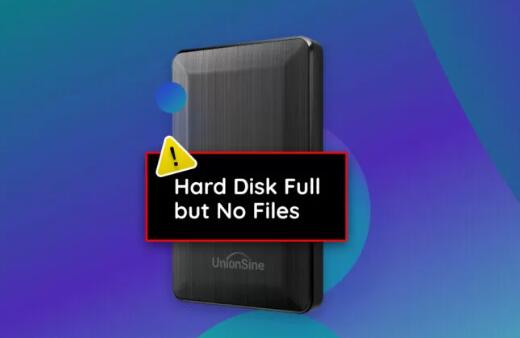If your hard disk is showing as full but you can’t find the files, there are a few potential explanations and solutions you might consider:
1. Hidden Files and Folders
Issue: Your hard disk might be full due to hidden files and folders that aren’t visible by default.
Solution:
On Windows, open File Explorer, go to the “View” tab, and check the “Hidden items” box to reveal hidden files and folders.
On macOS, you can use the shortcut Command + Shift + . (period) in Finder to toggle hidden files.
2. System and Temporary Files
Issue: System and temporary files can consume a significant amount of space. These files are often hidden and might not be immediately visible.
Solution:
On Windows, you can use the Disk Cleanup tool to remove temporary files, system files, and other unneeded items. Search for “Disk Cleanup” in the Start menu.
On macOS, you can use the built-in Storage Management tool. Go to “About This Mac” > “Storage” > “Manage” to see options for optimizing storage.

3. Corrupted File System
Issue: The file system might be corrupted, causing the disk to inaccurately report available space.
Solution:
On Windows, you can run a disk check by opening Command Prompt as an administrator and using the command chkdsk /f followed by the drive letter.
On macOS, you can use Disk Utility to run First Aid on the affected drive.
4. Malware or Software Issues
Issue: Malware or certain software might be creating or hiding files that consume disk space.
Solution:
Run a full antivirus scan to detect and remove any malware.
Check for any software that might be creating temporary files or logs.
5. Disk Space Usage Analysis Tools
Issue: Manually checking space usage can be tedious. You might need a tool to analyze disk usage.
Solution:
On Windows, tools like WinDirStat or TreeSize can help visualize and identify large files and folders.
On macOS, DaisyDisk or GrandPerspective are useful for analyzing disk usage.
6. System Restore Points and Backup Files
Issue: System restore points or backup files can consume large amounts of disk space.
Solution:
On Windows, you can manage restore points by going to “System Properties” > “System Protection” and adjusting settings or deleting old restore points.
On macOS, manage Time Machine backups through the Time Machine settings.
7. Unallocated Space
Issue: Sometimes, the disk might show as full due to unallocated or partition issues.
Solution:
Use disk management tools to check for unallocated space or partition issues.
On Windows, open Disk Management by right-clicking on “This PC” and selecting “Manage” > “Disk Management.”
On macOS, use Disk Utility to review and manage partitions.
8. External Drives and Network Storage
Issue: If you’re dealing with an external or network drive, ensure that it’s properly connected and that no issues with the connection are causing the space discrepancy.
Solution:
Check connections and cables.
Ensure that network drives or cloud storage aren’t being counted in the disk usage.
By systematically addressing each of these areas, you should be able to identify why your hard disk is showing as full despite not finding visible files. If the problem persists, professional data recovery services or technical support might be necessary to further investigate the issue.
About us and this blog
Panda Assistant is built on the latest data recovery algorithms, ensuring that no file is too damaged, too lost, or too corrupted to be recovered.
Request a free quote
We believe that data recovery shouldn’t be a daunting task. That’s why we’ve designed Panda Assistant to be as easy to use as it is powerful. With a few clicks, you can initiate a scan, preview recoverable files, and restore your data all within a matter of minutes.
Subscribe to our newsletter!
More from our blog
See all postsRecent Posts
- Reformat external hard drive from mac to pc 2025-01-20
- i can’t see my secopnd hard drive on my mac 2025-01-20
- How to reformat external hard drive for mac and pc? 2025-01-20










